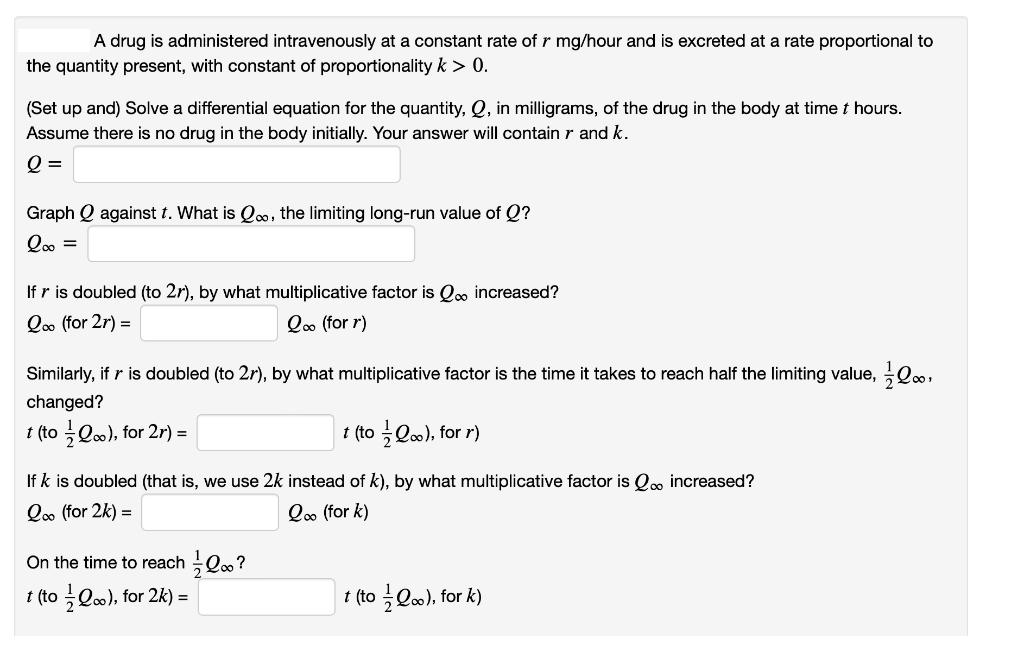Answered step by step
Verified Expert Solution
Question
1 Approved Answer
A drug is administered intravenously at a constant rate of r mg/hour and is excreted at a rate proportional to the quantity present, with

A drug is administered intravenously at a constant rate of r mg/hour and is excreted at a rate proportional to the quantity present, with constant of proportionality k > 0. (Set up and) Solve a differential equation for the quantity, Q, in milligrams, of the drug in the body at time t hours. Assume there is no drug in the body initially. Your answer will contain r and k. Q= Graph against t. What is Q, the limiting long-run value of Q? 200 = If r is doubled (to 2r), by what multiplicative factor is Q increased? Qoo (for 2r) = Q (for r) Similarly, if r is doubled (to 2r), by what multiplicative factor is the time it takes to reach half the limiting value, 20, changed? t (to Q), for 2r) = t (to 2%), for r) If k is doubled (that is, we use 2k instead of k), by what multiplicative factor is Qoo increased? Q (for 2k) = On the time to reach 2? t (to 2%), for 2k) = Qoo (for k) t (to 2%), for k)
Step by Step Solution
★★★★★
3.38 Rating (164 Votes )
There are 3 Steps involved in it
Step: 1
To set up the differential equation for the quantity Q of the drug in the body at time t well use the concept of exponential decay Let Qt be the quant...
Get Instant Access to Expert-Tailored Solutions
See step-by-step solutions with expert insights and AI powered tools for academic success
Step: 2

Step: 3

Ace Your Homework with AI
Get the answers you need in no time with our AI-driven, step-by-step assistance
Get Started


